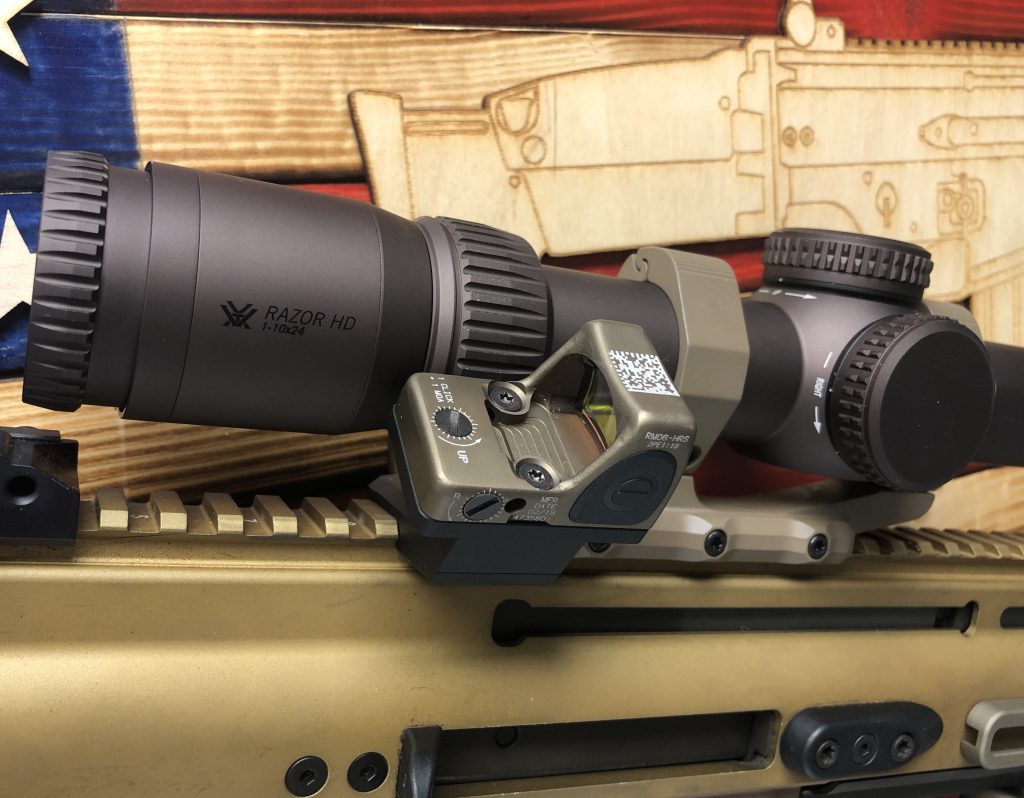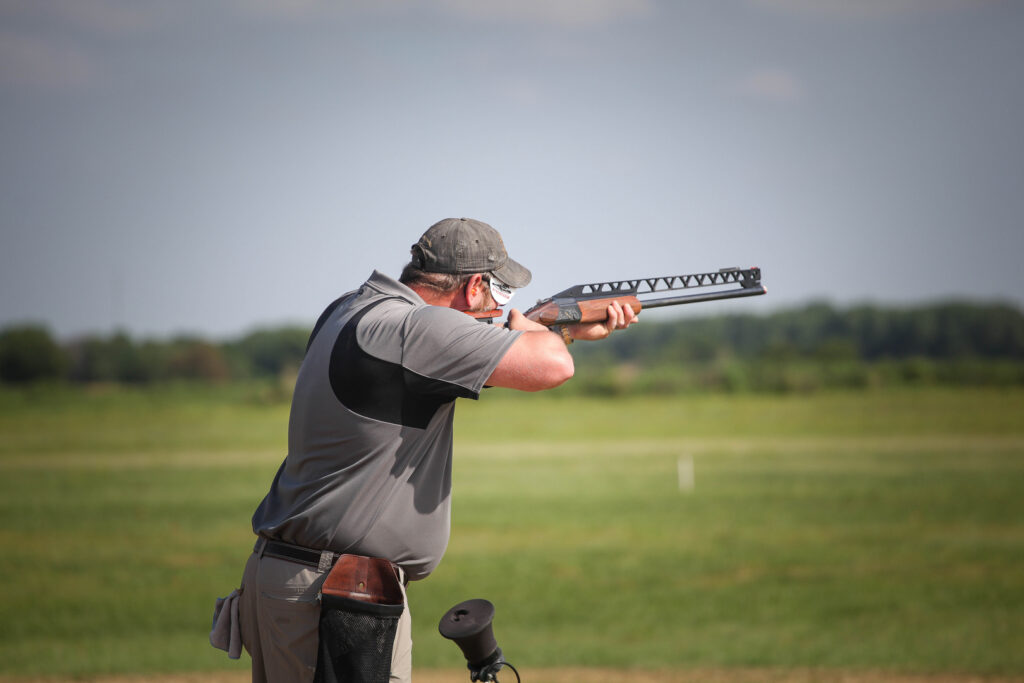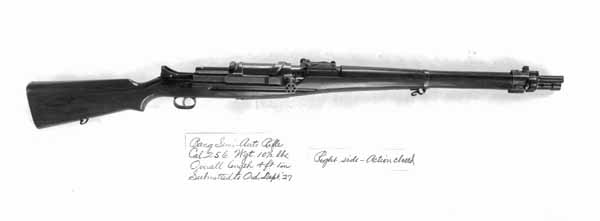My buddy over at VSO thinks you’re probably using your offset sights wrong.
He might have a point.
I don’t know how you’re using your sights, only you do, so I can neither confirm nor deny your rightness or wrongness.
Advertisement — Continue Reading Below
However offsets are something a lot of folks are running and they are failing to account for a few things.
So let’s talk about those.
Do you need offsets?
Probably not.
Advertisement — Continue Reading Below
“But then.. why are you..?”
Hold a second, I said probably not.
If you’re running a dot as primary, you don’t need offsets. If you’re running a fixed prism in the 1-4x range, you don’t need offsets. If you’re running an LPVO, you don’t need offsets.
Advertisement — Continue Reading Below
In all of those instances you can still run offsets if you want, but you don’t need them. You aren’t getting enough distortion at your eyeball to make indexing a close target too problematic. It will start getting a little odd at 4x, which is why I think the TA31 ACOG and TA11 enjoyed the reputations they do but the 5.5x
When do I ‘need’ them?
Offsets make most sense in two particular instances, and this can apply to offset dots and dots mounted atop a scope too.
- Need a second zero
- If I am running competition or a rifle set up where I need a second zero that is vastly different than my primary optic’s zero, an offset or offsets makes sense.
- This will usually be a very close zero where the primary zero is at 50 or 100 and the secondary is something like 15, 25, or even 7. (Meters or Yards)
- Primary optic is for distance, offset(s) are for close
- If the low end magnification on your optic is a 2x or more, its high end magnification is probably 10x or greater. Cranking down a magnification in order to address a close in target is more time consuming than moving the eye/rifle to the non-magnified optic/sights.
- If the primary optic can’t quickly index onto the target that is what the offset(s) are for, a quick and dirty ‘good enough’ and squeeze the trigger.
About those angles
The video covers nicely properly indexing the sights over the barrel for best effect.
Advertisement — Continue Reading Below
What offsets do is stack competing angles and that can mess with your point of impact by quite a bit, as he demonstrates.
The optic directly above the barrel is indexed to the angle of the barrel when the rifle is held vertically. Remember the barrel is angled up to get more distance out of the shot, we’ve been doing it for centuries.
Now if we offset the sight, we add an additional angle to the flight of the bullet. We’re canting the original vertical angle either left or right by 20, 30, or 45 degrees and any further offsets that complicate that angle.
Advertisement — Continue Reading Below
Don’t overthink it. Just realize that once your lining up an offset shot, you’re putting a left or right arc on the flight path of the round. In order to make certain your lined up shot is somewhere around where the sight is showing, you need to understand what that round is doing in the space and distance.
Remember also that doing a short distance zero means putting the sight(s) and barrel at a relatively dramatic angle to each other and that is going to limit the amount of distance that the offset sight is worth anything. Longer distance zeroes with more gradual flight paths will give you more usable range.
I’m a big fan of 50 (yards or meters, I don’t care which) as the absolute zero point, so that 1-75 or even 1-100 puts my impact point near enough my sight to be useful. Doing something like a 7 yard zero means my round is hauling out widely left or right very quickly once it passes my zero distance. But if I’m using the offset on a rifle for competition and I just need to smoke the A-Zone up close twice real quick, that might fit my use for the optic.
Advertisement — Continue Reading Below
Use dictates zero

Like I said above, I prefer zeroing the sights at 50. Between 0 and 50 the round will be closing the offset distance, 2.5-4 inches, at an angle to the sights then the roughly next 50 it will continue onward until a roughly equivalent offset happens at around roughly 100. Roughly. You could track the impact cone if you know each angle but close enough will work in these instances.
Quick and dirty. Close enough.
Advertisement — Continue Reading Below
Now taking that same rough math and reduce the zero to 7 yards. Now you are 4 inches off at the muzzle, on at 7 yards, and off again around 4 inches by 14 yards. But now trying to hit a 25 yard target… around 10 inches off the point of aim at an odd angle. By 50 yards it’s better than 20 inches of distance from your point of aim at a weird angle. Making your really useful distance with that 7 yard from about 3 or 4 yards to about 11 or 12. Not that it’s impossible to Kentucky Windage any shot outside that bracket, but you’re fighting yourself for almost no gain unless you really need that 7 yard PAO/POI to line up.
I would argue and my experience has been that it is easier to get used to optical offset and correct for it up close than it is at distance.
YMMV, but probably not by much.
Advertisement — Continue Reading Below















